Most European dietary guidelines suggest swapping out white, refined grains for whole grains. But picking out the whole grain versions can be confusing sometimes. How can I tell if my bread, bagel, English muffin, or granola bars are whole grain?
Here are five criteria to help you identify whole grain products and recognise which ones are not necessarily whole grain.
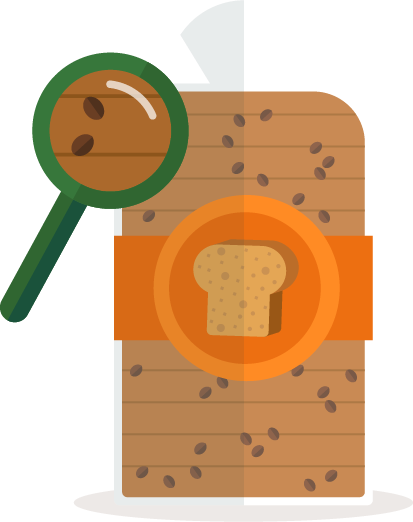


There aren’t any EU-wide rules for labelling whole grains, but some countries have come up with their own guidelines for labelling or making health claims about whole grain foods.1
If you live in one of these countries, checking for a whole grain logo or claim might be an easy way to recognise a whole grain product. Keep reading below for more information about what it means in your country. If your country is not listed, jump to tip 2!
Denmark uses a voluntary whole grain logo that shows up on foods with a higher content of whole grains [fuldkorn] and low amounts of fat, sugar, and salt. To earn this logo, a product needs to meet certain standards for whole grain content, keep levels of things like fat, sugar and salt in check, and meet thresholds for dietary fibre. For instance, a product qualifies for the logo if:
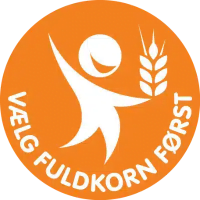
Denmark, Norway, and Sweden use the voluntary Nordic Keyhole. This little symbol on the front of food packaging tells you that the product has more whole grains and meets other healthy standards, like having less fat, sugar, and salt, and more fibre compared to similar foods without the symbol. To use the keyhole symbol:


Keep in mind that whole grains are just one piece of the puzzle. It’s also important to watch out for things like sugar, salt, and overall calories. In some countries, even if a product has a whole grain label or claim, it can still contain a lot of sugar (more than 22.5 g per 100 g) or salt (over 1.5 g per 100 g), which can have negative effects on health.

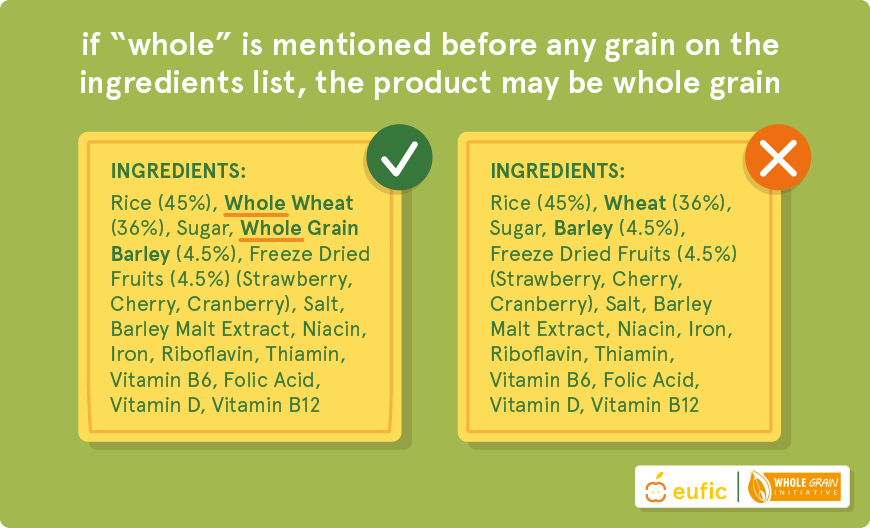

However, with this criterion it’s still possible to pick out a bunch of products that are mostly refined grains with just a little bit of whole grains since it doesn’t take into account the amount of that ingredient in the product. Remember that ingredients that are present in a higher quantity in the product appear near the beginning of the ingredients list, while those present in smaller quantities near the end. Plus, it could overlook other whole grain options because some, like oats or bulgur, don’t have the word ‘whole’ in their name while they’re always a whole grain option.
Another heads-up: even if a product meets this criterion, it might still have a lot of sugars, salt, and calories. Make sure to check the nutrition declaration and try to limit foods high in sugars (more than 22.5 g of sugar per 100 g) and salt (more than 1.5 g of salt per 100 g).

To find out if a product has whole grains, check the ingredients list on the label. Look for words like ‘whole’ or ‘whole grain’ before the name of the cereal, like ‘whole wheat pasta’ or ‘whole oats.’ Whole grain ingredients also include oats, brown rice, amaranth, buckwheat, bulgur, popcorn, and other whole grains.
If whole grains are listed as the first or second ingredient (after water), you can usually consider it a whole grain food. This is because ingredients in the ingredient list are listed in descending order of weight. So, those present in higher quantities appear near the beginning of the list, while those in smaller quantities appear near the end.
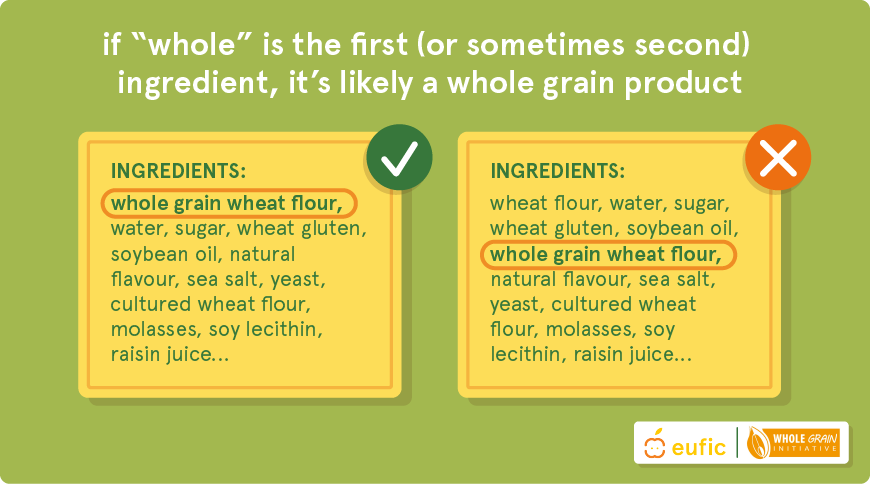

Even if a product meets this criterion, it might still be loaded with sugar and calories. Be sure to check the nutrition declaration, and try to go easy on foods that have a lot of sugar (more than 22.5 g per 100 g).

To find out if a product has whole grains, check the ingredients list on the label. Look for words like ‘whole’ or ‘whole grain’ before the name of the cereal, like ‘whole wheat pasta’ or ‘whole oats.’ Whole grain ingredients also include oats, brown rice, amaranth, buckwheat, bulgur, popcorn, and other whole grains.
If whole grains are listed as the first or second ingredient (after water) and added sugars like ‘sugar,’ ‘brown sugar,’ ‘syrup’, ‘fruit juice concentrate,’ or ‘dextrose’ aren’t among the first three ingredients, you can usually consider it a more nutritious whole grain food. This is because ingredients in the ingredient list are listed in descending order of weight. So, those present in higher quantities appear near the beginning of the list, while those in smaller quantities appear near the end.
Why should we choose products with little added sugars? This is because it’s best to keep our intake of added and free sugars as low as possible since the more sugar we eat, the higher the risk of negative health effects.


Still, be careful! Some of these products might still have a lot of salt, so be sure to check the nutrition declaration. Try to go easy on foods with more than 1.5 g of salt per 100 g.

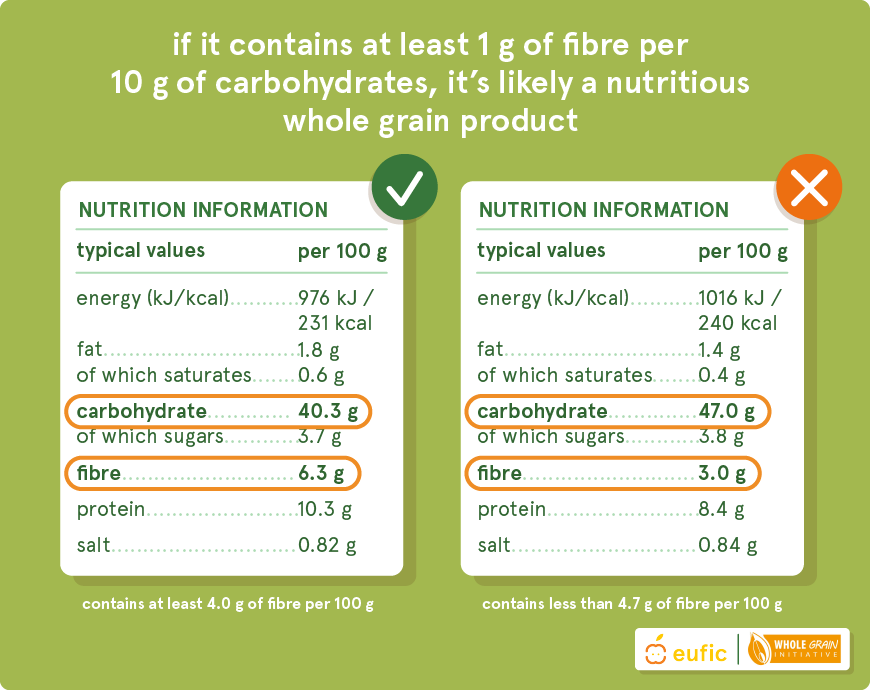

While this is an easy-to-apply rule to help you identify nutritious whole grain options, it can’t tell the difference between the fibre that’s naturally in whole grains and the fibre that’s added separately. While more fibre (regardless its source) is better than no fibre at all, added fibre might not be as good for you as the fibre from whole grains. The product could also be refined and have added fibre back in. You can spot added fibre on the ingredient list – it’ll show up as things like ‘bran,’ ‘psyllium husk,’ ‘inulin,’ or ‘chicory root.’
When you see terms like ‘multi-grain,’ ‘stone-ground,’ ‘100% wheat,’ ‘seven-grain,’ ‘bran,’ or ‘enriched’ on food products, don’t assume they’re all whole grain! Here’s what these terms really mean:
Finally, don’t be fooled by colour – brown bread can get its hue from ingredients like molasses or colouring additives, not necessarily whole grains.
1.
Mathews, R., & Chu, Y. (2020). Global review of whole grain definitions and health claims. Nutrition Reviews, 78(Supplement_1), 98-106.
2.
Mozaffarian, R. S., Lee, R. M., Kennedy, M. A., Ludwig, D. S., Mozaffarian, D., & Gortmaker, S. L. (2013). Identifying whole grain foods: a comparison of different approaches for selecting more healthful whole grain products. Public health nutrition, 16(12), 2255-2264.
3.
NVWA. (2024). Volkorenproducten. Accessed 18 November 2024.
4.
Brood en Gezondheid. (2024). Volkoren definitie. Accessed 18 November 2024.
5.
Lebensmittel Klarnheit. (2023). Ist der Begriff „Vollkorn“ rechtlich gesuchützt? Accessed 18 November 2024.
Learn to identify whole grain products, cook delicious meals, find practical tips for a smooth, gradual switch, and much more!